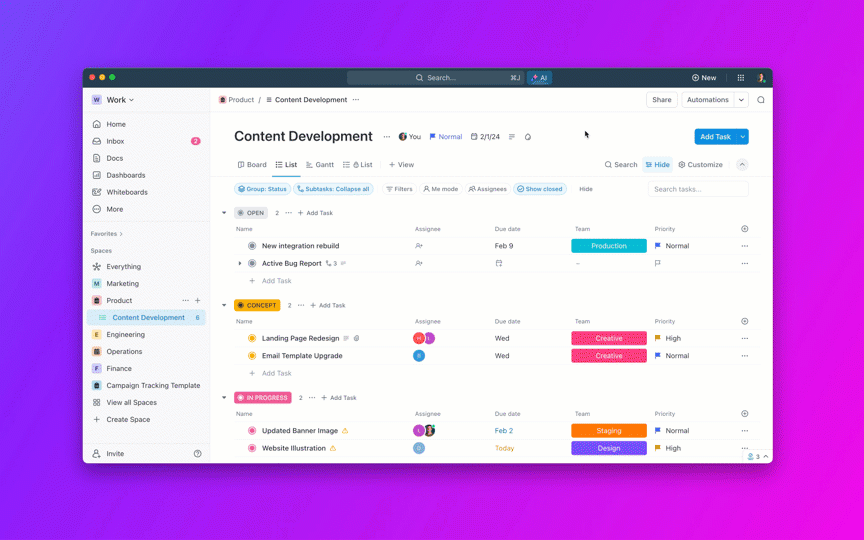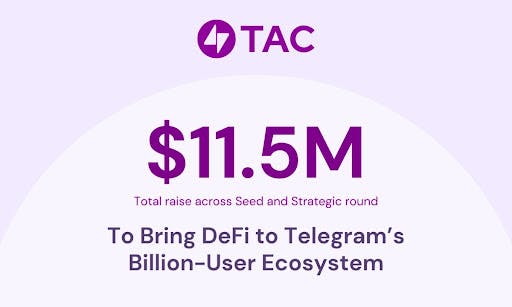Agentic reasoning is becoming a cornerstone in how AI systems are built, especially when they need to do more than follow instructions. You’re no longer looking for tools that wait for input. You need systems that can think, adapt, and make the next move.
Most AI today is still reactive. It answers questions, automates tasks, and runs on scripts. But as projects get more complex and data sources multiply, that’s no longer enough. You need reasoning, not just execution.
That’s where agentic AI comes in. It handles complex tasks, navigates ambiguity, and pulls from enterprise data to make smarter decisions. Instead of asking “What should I do next?” it already knows.
This is the kind of intelligence Brain was built to support. Designed for teams running high-context, high-speed workflows, it helps you plan, prioritize, and automate. All of this with context awareness baked in.
Interesting right? But let’s explore further how agentic AI reasoning works, what makes it different from traditional systems, and how you can implement it into your workflows effectively.
⏰ 60-Second Summary
Building AI that just follows instructions won’t cut it anymore. Here’s why agentic reasoning is redefining how intelligent systems work:
- Use agentic reasoning to create AI systems that set goals, plan, adapt, and act with intent—not just execute predefined steps
- Move beyond static automation by deploying agents that handle ambiguity, manage tasks, and learn from feedback
- Apply agentic systems across product delivery, support triage, enterprise search, and strategy to drive high-impact outcomes
- Design smarter architectures using reasoning engines, dynamic workflows, feedback loops, and human-in-the-loop controls
- Avoid scaling pitfalls with structured data, adaptive infrastructure, and progressive team adoption strategies
- Build intelligent workflows faster with Brain, which is equipped for automation, prioritization, and context-aware decision-making
Agentic Reasoning: Role in Decision-Making and Problem-Solving
Understanding Agentic Reasoning
Agentic reasoning is when an AI system can set goals, make decisions, and take action. It does it all without needing constant direction. It’s a shift from reactive execution to intelligent autonomy.
You’ll see it in action when:
- An AI assistant prioritizes product backlog items based on impact and urgency
- A coding agent refactors your codebase by analyzing error patterns across past sprints
- Some knowledge assistants scan internal documentation to suggest solutions before support tickets are filed
These aren’t hardcoded tasks. They’re goal-driven behaviors supported by reasoning models that interpret context and choose actions with purpose.
That’s what sets agentic AI reasoning apart and why it’s a foundation for modern intelligent systems.
The role of agentic reasoning in artificial intelligence
As you work with more advanced AI models, traditional logic trees and predefined scripts become limiting.
You need systems that:
- Interpret vague or incomplete user inputs
- Draw from training data and current context
- Execute specific tasks without step-by-step instructions
- Handle ambiguous requests across your data sources
That’s where agentic AI reasoning shows its strength. It allows AI agents to bridge gaps between intent and execution, especially in complex environments like enterprise search, product management, or large-scale software development.
It also opens the door to building AI systems that improve over time. With the right architecture, agentic models can continuously improve, adjust priorities, and refine outputs based on what works.
Agentic vs. non-agentic systems
Here’s how the two approaches stack up when applied to real-world AI workflows:
| Feature | Agentic systems | Non-agentic systems |
| Decision-making | Autonomous, context-aware | Trigger-based, reactive |
| Goal-setting | Dynamic and internal | Predefined by external inputs |
| Adaptability | Learns from results and feedback | Requires manual intervention |
| Data handling | Synthesizes across multiple data sources | Limited to one task or dataset at a time |
| Output | Personalized, evolving responses | Static, templated outputs |
Non-agentic workflows have their place, primarily for repetitive automation or narrow-scope tools. But if you’re building for complex problem-solving, context switching, or strategic execution, agentic models offer a far broader range of capabilities.
Core Components of Agentic Reasoning in AI
Building agentic intelligence isn’t about adding more layers to existing automation. It’s about designing AI systems with a reasoning process that mirrors how real agents set objectives, evaluate progress, and adapt over time.
Here are the essential components that power an agentic workflow:
1. Goal formulation
Every reasoning system starts with a clear objective. This goal can be user-defined or generated internally in agentic AI systems based on new inputs or emerging patterns.
- A product agent might identify a delay risk based on cross-team blockers
- The customer support agent could detect recurring issues and prioritize a resolution workflow
The key is initiative, goals aren’t just followed, they’re generated, evaluated, and refined.
2. Planning and decomposition
Once a goal is defined, the AI breaks it down into smaller tasks. This involves reasoning about dependencies, available resources, and timing.
For example, an agent asked to migrate a legacy database might:
- Identify outdated schemas
- Match them with modern alternatives
- Sequence the migration to minimize downtime
These systems don’t just complete steps; they reason through the best order of operations.
3. Contextual memory and feedback
Without memory, there’s no adaptation. Agentic AI needs a persistent understanding of past events, decisions, and external changes. This memory supports:
- Tracking progress over long-term objectives
- Adjusting strategy based on real-time feedback
- Storing relevant outcomes to improve future reasoning
Unlike traditional logic trees, agentic models can evaluate what worked and what didn’t and continuously improve through iteration.
4. Adaptive execution
Execution isn’t the final step; it’s an ongoing, evolving process. The reasoning engine monitors the outcome of each task and makes adjustments as needed.
In a document summarization workflow, for instance, the agent might:
- Recognize low-quality input data
- Re-prioritize source selection
- Adjust its summary style based on audience feedback
This flexibility separates non-agentic workflows from intelligent systems that can operate independently and still produce accurate, context-aware responses.
When these components work together, you get a smarter system that learns, adjusts, and scales with complexity. Whether you’re building AI applications for engineering, product, or knowledge management, agentic reasoning forms the foundation for consistent, intelligent outcomes.
Implementing Agentic Reasoning
Designing an AI that does the work is easy. Designing one that decides what work matters and how to do it is where things get interesting. That’s where agentic reasoning becomes more than a feature. It becomes the architecture.
Here’s what it takes to implement it into your stack.
Define decision boundaries, not scripts
You don’t give agentic systems step-by-step instructions. You define boundaries like what the agent can touch, what goals it should pursue, and how far it’s allowed to explore.
That means:
- Creating objective functions rather than static rules
- Allowing agents to evaluate trade-offs (speed vs. accuracy, short-term vs. long-term gain)
- Feeding agents constraints instead of commands
This makes your system resilient. It can handle unexpected input, shifting project scopes, or incomplete data without breaking the flow.
Build a reasoning engine that can plan and reprioritize
At the heart of implementation is your reasoning engine. The logic layer is responsible for translating goals into tasks, adapting to feedback, and sequencing actions dynamically.
To design this, you’ll need:
- A planner that decomposes high-level goals into executable tasks
- The memory layer that stores what’s been done, what’s working, and what to avoid
- A control loop that checks for progress, misalignment, and blockers
Think of it like building a product manager inside your AI. One that constantly evaluates what matters now, not just what was asked originally.
Integrate with tools that support adaptive workflows
Here’s where most implementations fail: People build intelligent agents that sit on top of non-agentic systems. You can’t plug agentic behavior into a rigid, linear workflow and expect it to thrive.
Your environment must support:
- Dynamic reordering of priorities
- Task ownership that can shift mid-sprint
- Cross-functional triggers based on context
This is where Brain comes in. It doesn’t just automate; it enables the agent to reason across tasks, documents, data, and dependencies. When your agent decides a spec document is outdated, it can flag the document, reassign the task, and adjust the sprint goal without waiting for you to notice.
Brain plays a significant role in decision-making and problem-solving with its capabilities to analyze, organize, and provide actionable insights. Here’s how it helps:
- Information aggregation: Brain consolidates data from tasks, documents, and comments, offering a comprehensive view for decision-making
- Contextual analysis: It identifies relationships and patterns across various assets, helping you understand the context of your options
- Prioritization: By analyzing task priorities and deadlines, Brain ensures critical issues are addressed first
- Collaboration and communication: It summarizes discussions and highlights key points, ensuring all stakeholders access the necessary information
- Problem identification: Brain detects bottlenecks and overdue tasks, alerting you to potential issues before they escalate
- Decision support: It provides insights and recommendations to facilitate informed decision-making based on accurate information
- Efficiency and automation: By automating repetitive tasks, Brain saves time and allows you to focus on strategic decisions
By leveraging its AI-powered task recommendations and workflow automation features, you can set and track goals, automate tasks, and make informed decisions with ease. Here’s how Brain can simplify goal setting and tracking, ensuring alignment with your strategic objectives.
- Tracking goals and OKRs: Use to organize your workspace hierarchy for tracking goals and OKRs. With tools like List and Gantt views, you can visualize progress and ensure your objectives stay on track. AI further enhances this by providing insights and recommendations to keep your goals measurable and actionable
- Consolidating updates in Docs: Consolidate your goal and OKR updates in Docs. This allows you to centralize information, tag stakeholders, and reference tasks. AI can assist in writing updates, summarizing progress, and even generating actionable insights from meeting notes
- AI-powered assistance: Struggling to articulate your goals or updates? AI can draft content, provide summaries, and even suggest next steps, saving you time and effort

Automation is at the heart of Brain, enabling you to focus on high-value tasks while repetitive processes are handled seamlessly:
- Workflow automation: Brain’s AutoAI feature allows you to automate task creation, updates, and connections. For example, you can set up automations to trigger actions based on specific conditions, such as updating a parent task’s status when a subtask is completed
- AI-generated subtasks: From a simple task name, Brain can generate detailed subtasks, ensuring nothing is overlooked in your workflow
- Custom automations: Tailor automations to your unique needs, whether it’s scheduling daily tasks, applying templates, or managing dependencies. This reduces manual effort and ensures consistency across your projects
Brain empowers you to make data-driven decisions by providing real-time insights and recommendations:
- AI-powered task recommendations: Brain analyzes your workspace to suggest tasks that need attention, helping you prioritize effectively. This ensures that critical tasks are addressed promptly, improving overall efficiency
- Real-time summaries: Get instant project summaries and updates without opening individual tasks. This feature is particularly useful for managers who need a high-level overview of progress and potential blockers
- Connected Search and insights: Brain integrates with external tools like Google Drive and SharePoint, allowing you to search for and analyze information across platforms. This ensures you have all the data you need to make informed decisions
By integrating Brain into your workflow, you can achieve greater efficiency, clarity, and focus. Whether you’re setting ambitious goals, automating repetitive tasks, or making strategic decisions, Brain is your ultimate reasoning partner.


With built-in features like AI-powered task recommendations and workflow automation, Brain helps your agents focus on impact and not just execution.
Design for feedback, not perfection
No agent gets it right the first time. That’s fine if your system is built to learn. Feedback loops are where agentic AI sharpens its edge.
Your job is to:
- Instrument your environment for high-quality feedback (task outcomes, blockers, resolution time)
- Let the agent modify its own behavior based on performance
- Avoid overfitting early logic and let it grow with usage
If you want a system that scales across teams and projects, you have to trade rigidity for relevance.
Agentic reasoning isn’t just about intelligence. It’s about infrastructure. The choices you make around goals, planning, feedback, and environment will decide whether your agent can do more than act as it has to think.
And with tools like Brain, you’re not duct-taping reasoning onto old workflows. You’re building a system that can make decisions as fast as your teams move.
Applications of Agentic Reasoning in AI Systems
Agentic reasoning is being implemented in production environments where logic trees and static automations fail. These are live systems solving for complexity, ambiguity, and strategic decision-making.
Here’s what it looks like in action:
1. Product delivery agents that manage scope and blockers
At a fintech company running weekly sprints across five product squads, an agentic system was deployed to monitor scope creep and sprint velocity.
The agent:
- Scans stories across Jira, Notion, and GitHub
- Detects misaligned velocity trends (e.g., 3 backlogged stories rolling into the next sprint)
- Flags delivery risk and auto-suggests scope reductions to preserve the milestone
It reasons across time, dependencies, and progress data and not just project metadata.
2. Support triage agents trained on internal resolutions
At a B2B SaaS company, L2 support agents were drowning in repeat escalations. An agent was trained on internal ticket threads, documentation updates, and product logs.
It now:
- Classifies new tickets with multi-intent reasoning
- Cross-references logs and previous resolutions from past tickets
- Automatically drafts contextual response suggestions and routes edge cases to the right team
Over time, it started surfacing product bugs from recurring patterns. Something no human caught due to channel fragmentation.
3. Infra-optimization agents in deployment pipelines
An AI infra team managing model deployment (MLFlow, Airflow, Jenkins) implemented a DevOps agent trained on historical failures.
It autonomously:
- Detects failing jobs and root causes (e.g., disk space overflow, memory caps)
- Re-prioritizes the build queue based on impact and downstream task chains
- Modifies deployment order to unblock higher-priority workflows
This moved incident response from manual alerting to automated reasoning and action with reduced build downtime.
👀 Did You Know? The earliest concept of an AI agent dates back to the 1950s, when researchers built programs that could play chess and reason through moves.
This makes game strategy one of the first real-world tests for autonomous decision-making.
4. Knowledge synthesis in enterprise search
In a law firm managing thousands of internal memos, contracts, and regulatory updates, search was failing under volume.
A retrieval agent now:
- Interprets queries like “Summarize recent precedents related to SEC disclosures”
- Pulls from internal databases, regulations, and past client advice memos
- Assembles summaries with citations and surface-level risk assessments
The difference? It doesn’t keyword match. It reasons across structured and unstructured data, tuned to user role and case context.


5. OKR agents for operations and strategy teams
In a health-tech org scaling rapidly across markets, leadership needed a way to adapt quarterly OKRs in flight.
A planning agent was trained to:
- Monitor KPI movements (e.g., patient acquisition lag in one region)
- Trace blockers to root functions (e.g., onboarding delays, support wait times)
- Recommend revised OKR scopes and cross-departmental resource shifts
It allowed leadership to adapt objectives within the quarter, something previously limited to retro planning.
All these application examples makes it clear that these Agentic reasoning systems enable AI to operate inside your real business logic. Where static rules and workflows can’t keep up.
Challenges and Consideration
Building agentic AI is an architectural shift. And with that comes real friction. While the potential is massive, the path to operationalizing agentic reasoning comes with its own set of challenges.
If you’re serious about adoption, these are the constraints you’ll need to design around.
1. Balancing autonomy with control
Agentic systems promise that they act independently but that’s also the risk. Without clear boundaries, agents may optimize for the wrong objective or act without enough context.
You’ll need to:
- Define acceptable operating parameters for each agent
- Build in human override layers for sensitive operations
- Set up checkpoints to evaluate agent behavior at key decision nodes
Total freedom isn’t the goal. Safe, goal-aligned autonomy is.
2. Poor training data = unpredictable behavior
Agents are only as good as the training data they’re built on and most organizations still have fragmented, outdated, or contradictory datasets.
Without reliable signals, reasoning engines will:
- Surface irrelevant or low-quality responses
- Misinterpret relevance in context-heavy environments
- Struggle to scale decision-making beyond narrow use cases
Fixing this means consolidating data sources, enforcing standards, and continuously improving your labeled datasets.
3. Reasoning doesn’t scale on static infrastructure
Many companies attempt to bolt agentic capabilities onto rigid, non-adaptive systems and it breaks fast.
Agentic systems need:
- Event-driven architectures that can adapt to agent decisions in real time
- APIs and workflows that respond dynamically to changing goals
- Infrastructure that supports feedback loops, not just outputs
If your current stack can’t adapt, the agent will hit a ceiling, no matter how intelligent it is.
👀 Did You Know? NASA’s Curiosity rover uses an AI system called AEGIS to autonomously select which rocks to analyze on Mars.
It made real-time scientific decisions without waiting for instructions from Earth.
4. RAG systems without reasoning hit a wall
Retrieval-Augmented Generation (RAG) is powerful but without agentic logic, most RAG systems remain passive.
Problems arise when:
- Retrieval logic can’t adapt based on outcome success
- Agents can’t evaluate document quality or synthesis gaps
- Query construction lacks contextual awareness
To close this gap, RAG systems need to reason through what to retrieve, why it matters, and how it fits the task. And not just generate text from whatever they find. That means upgrading your rag system to operate like a strategist, not a search engine.
5. Organizational adoption is often the biggest blocker
Even if the tech works, people resist giving AI control over prioritization, planning, or cross-functional coordination.
You’ll need to:
- Start with non-agentic workflows and progressively evolve them
- Keep agents visible, auditable, and easy to override
- Educate teams on how agentic systems reason, so trust builds over time
Adoption is less about the model and more about clarity, control, and transparency.
6. Agents can’t adapt without structured feedback
Your agent’s ability to adapt depends on what it learns from. If feedback loops aren’t in place, it stagnates.
That means:
- Logging every outcome (success/failure), not just task completion
- Feeding back qualitative and quantitative performance data
- Using that to drive model updates, not just metrics dashboards
Agentic AI systems are meant to continuously improve. Without feedback architecture, they plateau.
Agentic reasoning is a system of models, logic, constraints, and workflows built to reason under pressure. If you treat it like just another automation layer, it will fail.
But if you design for relevance, feedback, and control, your system won’t just act. It’ll think and keep getting better.
The Future Belongs to Systems That Can Think
Agentic reasoning is becoming the new standard for how intelligent systems operate in real-world environments. Whether you’re using large language models to handle complex queries, deploying AI solutions to automate decisions, or designing agents that can perform tasks across tools, data, and teams, these systems now face a new bar. They need to reason, adapt, and act with context and intent.
From surfacing the most relevant documents to making sense of fragmented company knowledge and executing on complex tasks with the right context, the ability to deliver relevant information at the right moment is no longer optional.
With Brain, you can start building agentic workflows that align work to goals, not just check off tasks. Try today.


Everything you need to stay organized and get work done.












